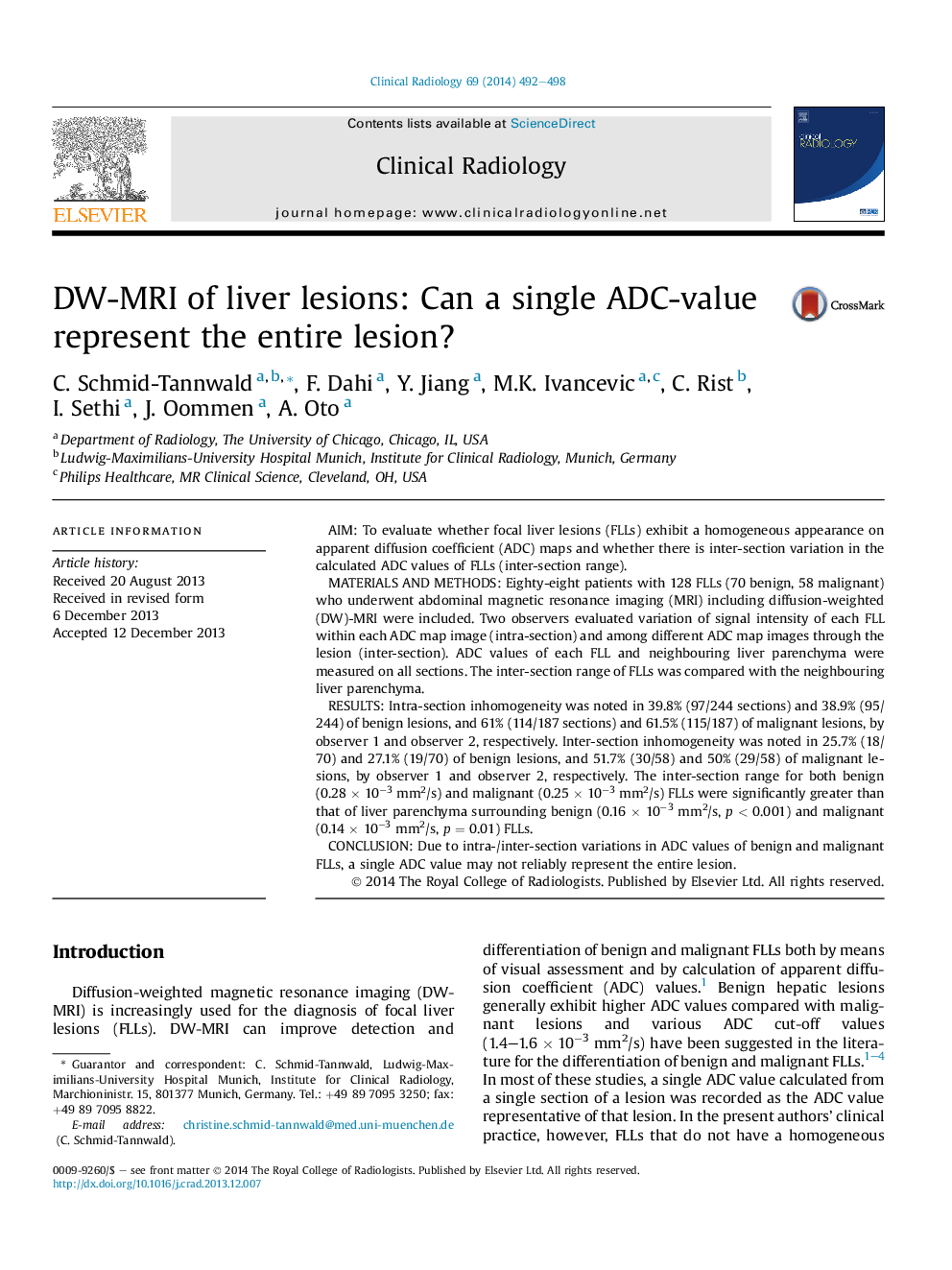| Article ID | Journal | Published Year | Pages | File Type |
|---|---|---|---|---|
| 3982342 | Clinical Radiology | 2014 | 7 Pages |
AimTo evaluate whether focal liver lesions (FLLs) exhibit a homogeneous appearance on apparent diffusion coefficient (ADC) maps and whether there is inter-section variation in the calculated ADC values of FLLs (inter-section range).Materials and methodsEighty-eight patients with 128 FLLs (70 benign, 58 malignant) who underwent abdominal magnetic resonance imaging (MRI) including diffusion-weighted (DW)-MRI were included. Two observers evaluated variation of signal intensity of each FLL within each ADC map image (intra-section) and among different ADC map images through the lesion (inter-section). ADC values of each FLL and neighbouring liver parenchyma were measured on all sections. The inter-section range of FLLs was compared with the neighbouring liver parenchyma.ResultsIntra-section inhomogeneity was noted in 39.8% (97/244 sections) and 38.9% (95/244) of benign lesions, and 61% (114/187 sections) and 61.5% (115/187) of malignant lesions, by observer 1 and observer 2, respectively. Inter-section inhomogeneity was noted in 25.7% (18/70) and 27.1% (19/70) of benign lesions, and 51.7% (30/58) and 50% (29/58) of malignant lesions, by observer 1 and observer 2, respectively. The inter-section range for both benign (0.28 × 10−3 mm²/s) and malignant (0.25 × 10−3 mm²/s) FLLs were significantly greater than that of liver parenchyma surrounding benign (0.16 × 10−3 mm²/s, p < 0.001) and malignant (0.14 × 10−3 mm²/s, p = 0.01) FLLs.ConclusionDue to intra-/inter-section variations in ADC values of benign and malignant FLLs, a single ADC value may not reliably represent the entire lesion.
